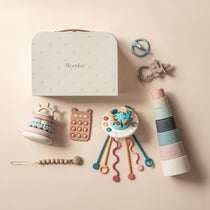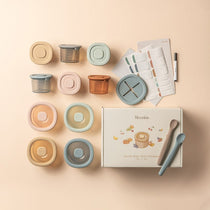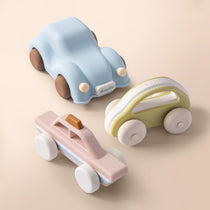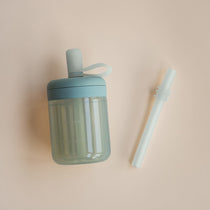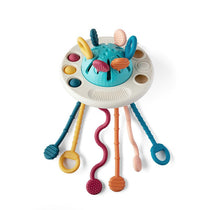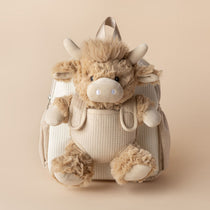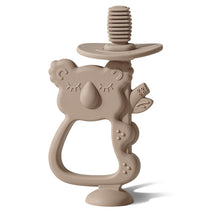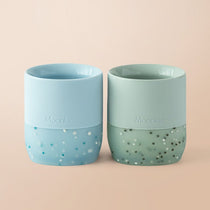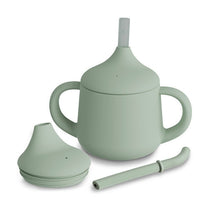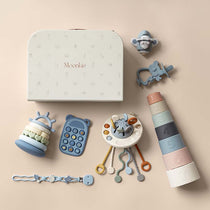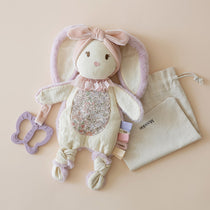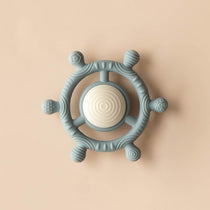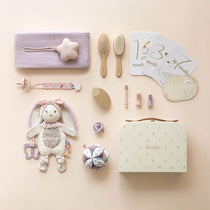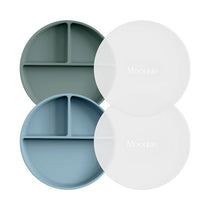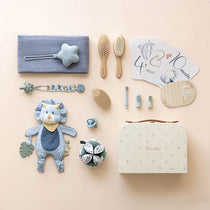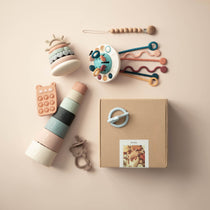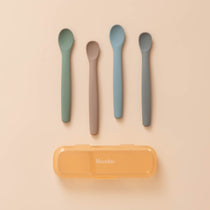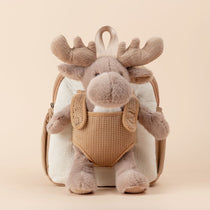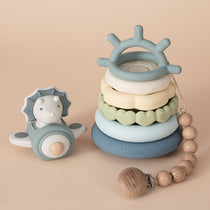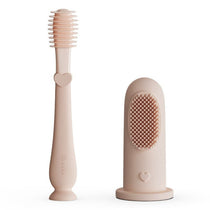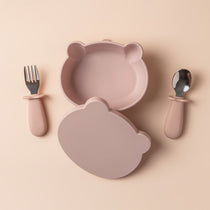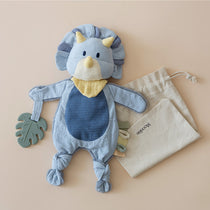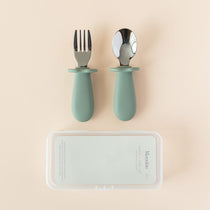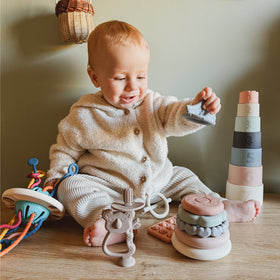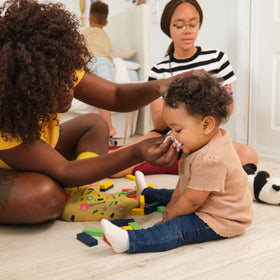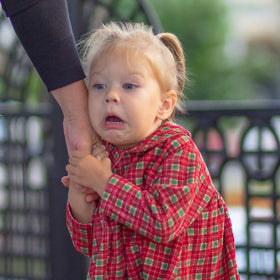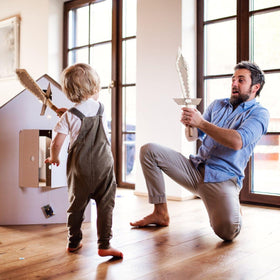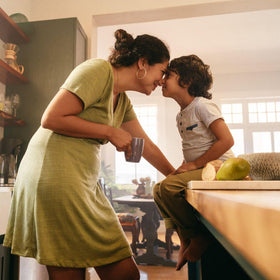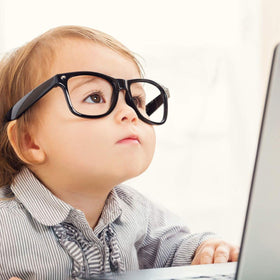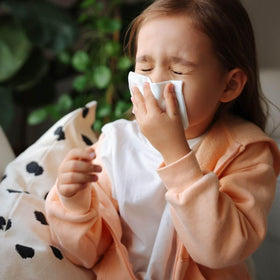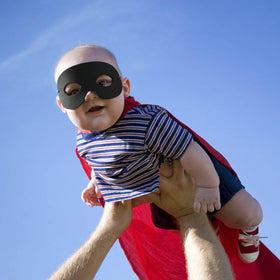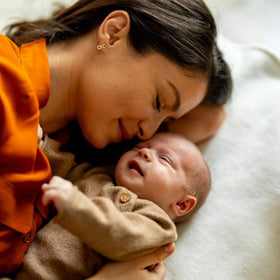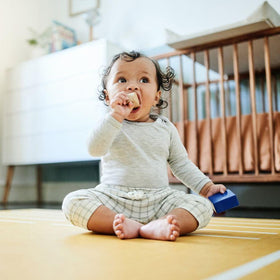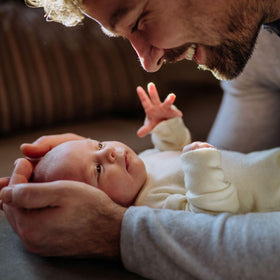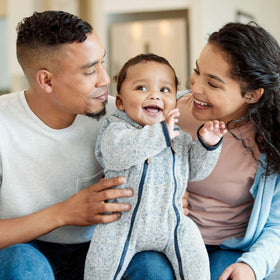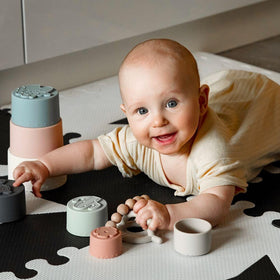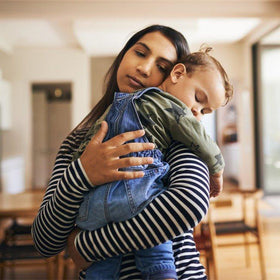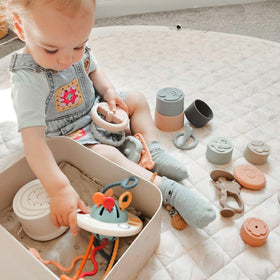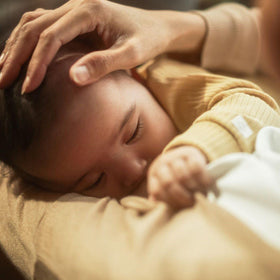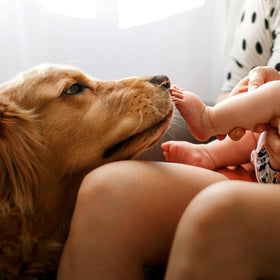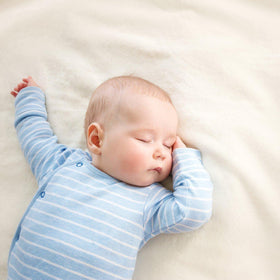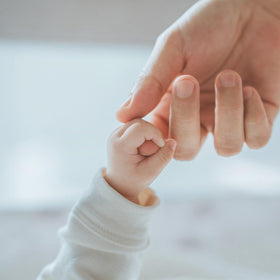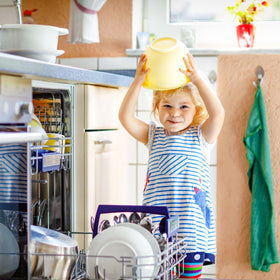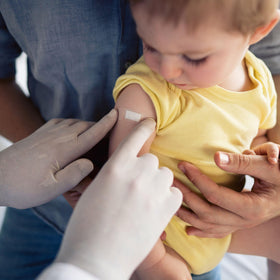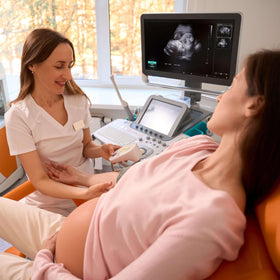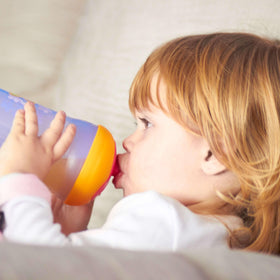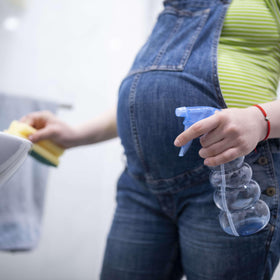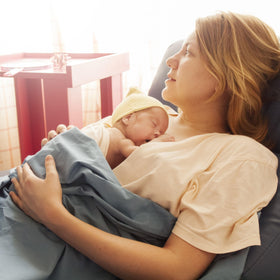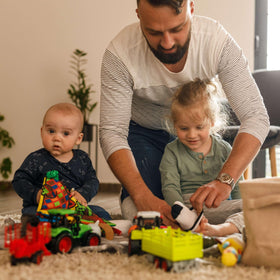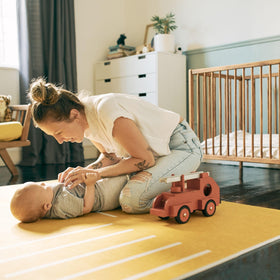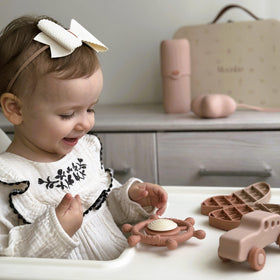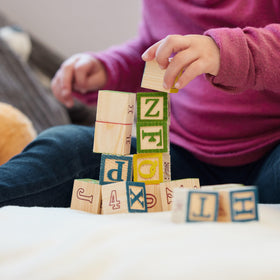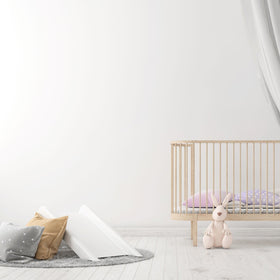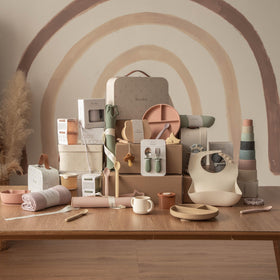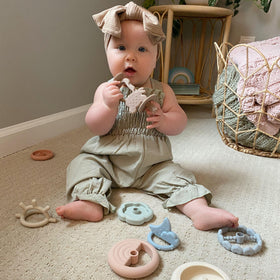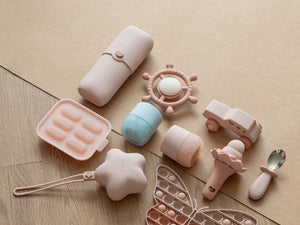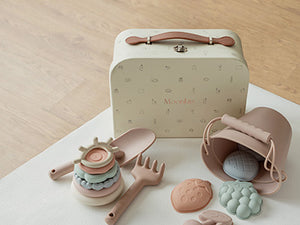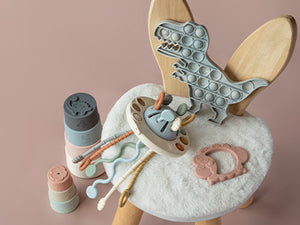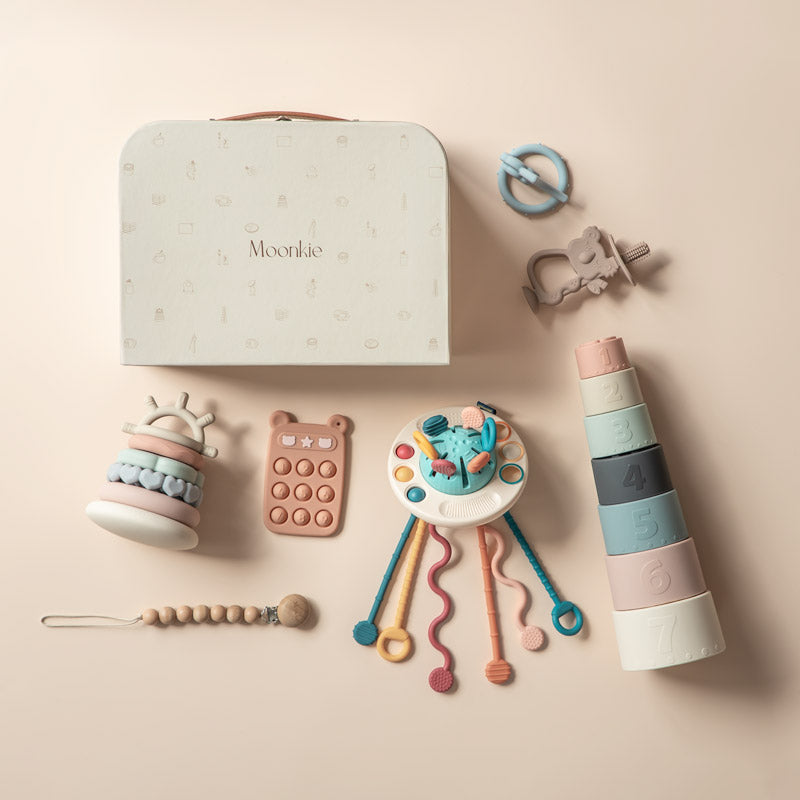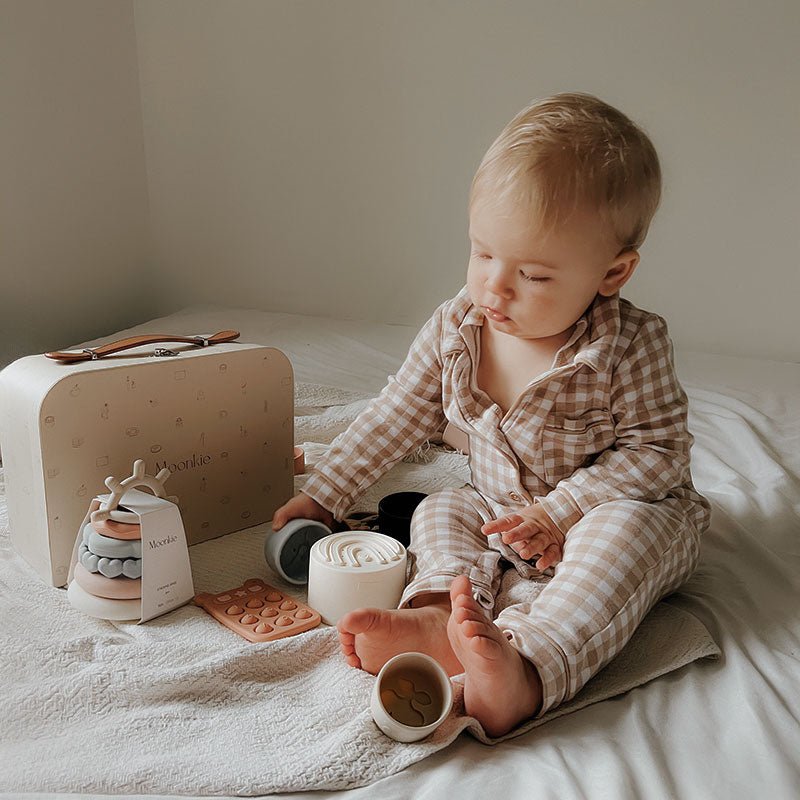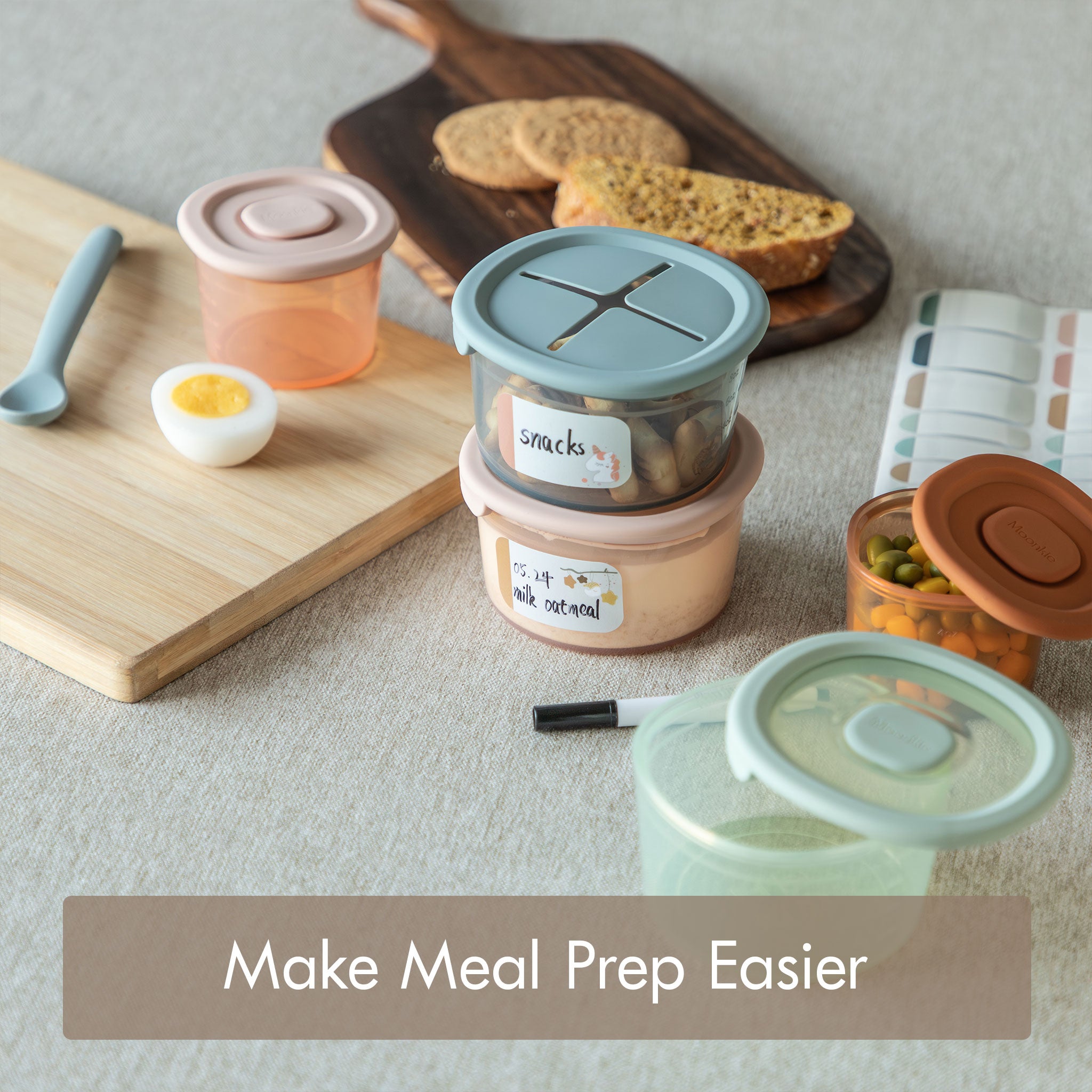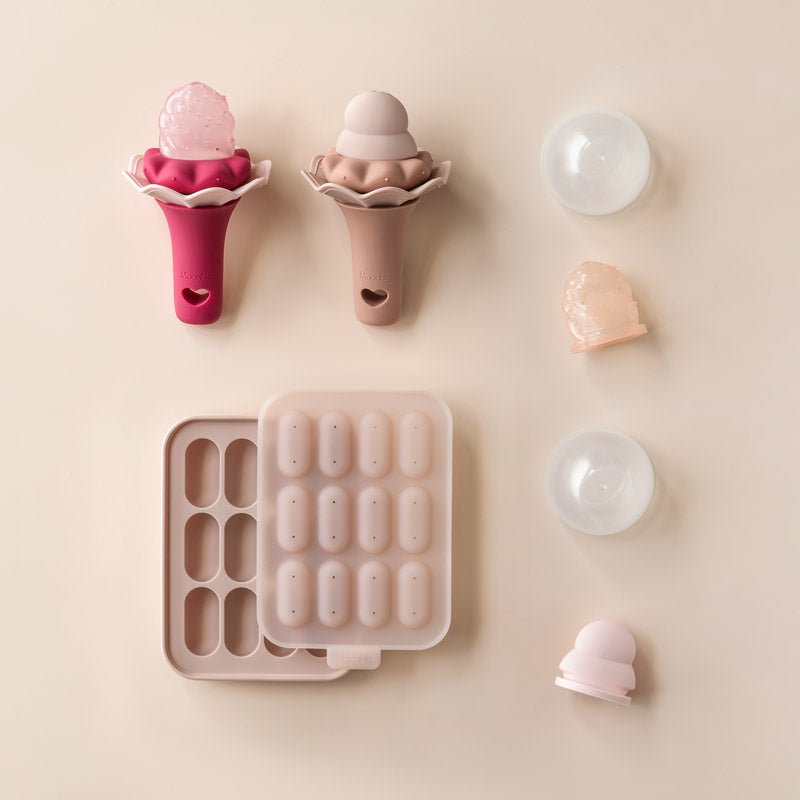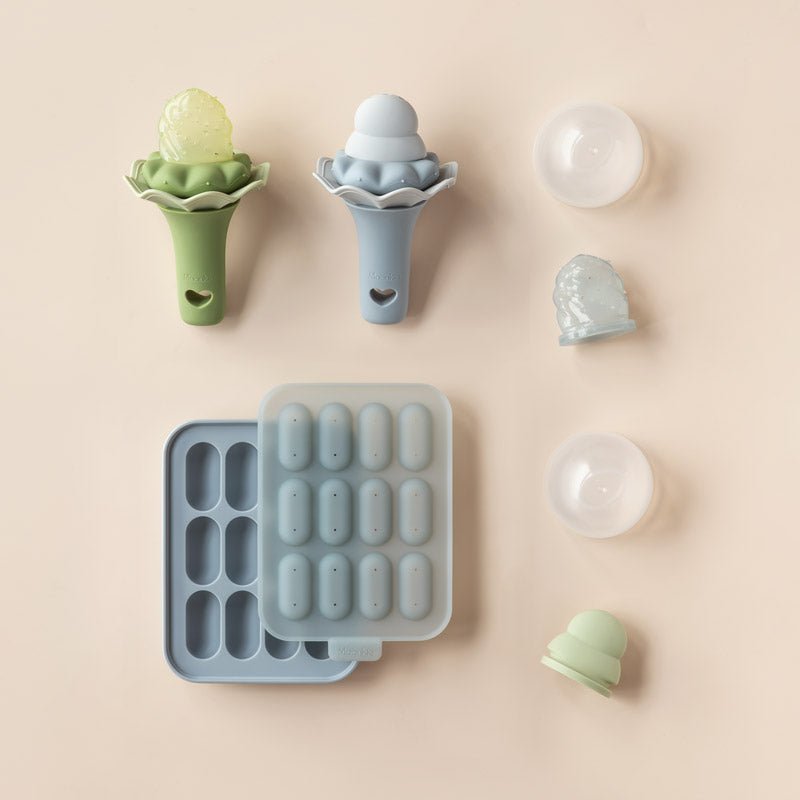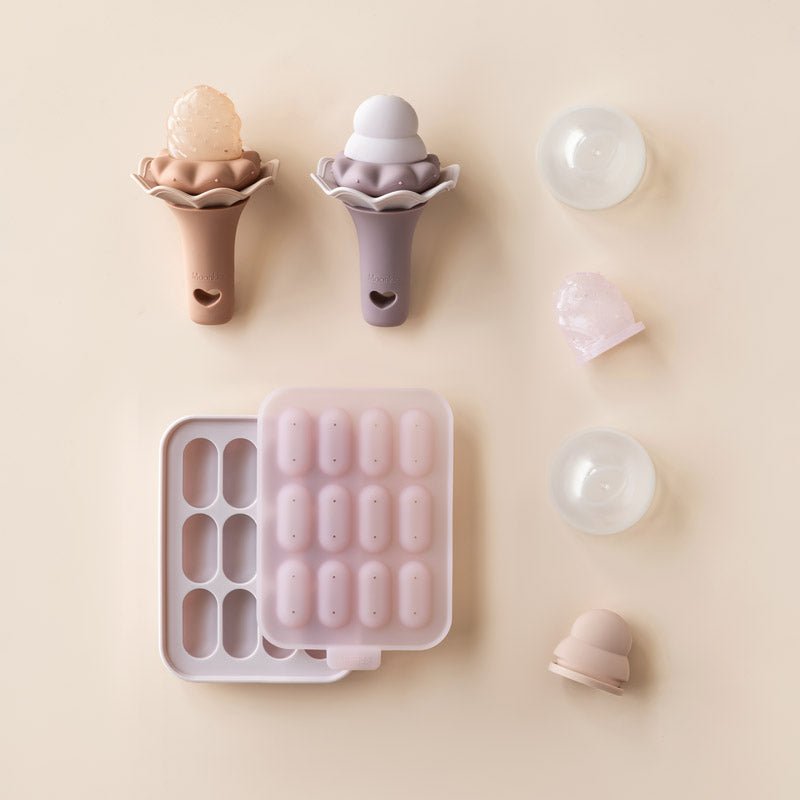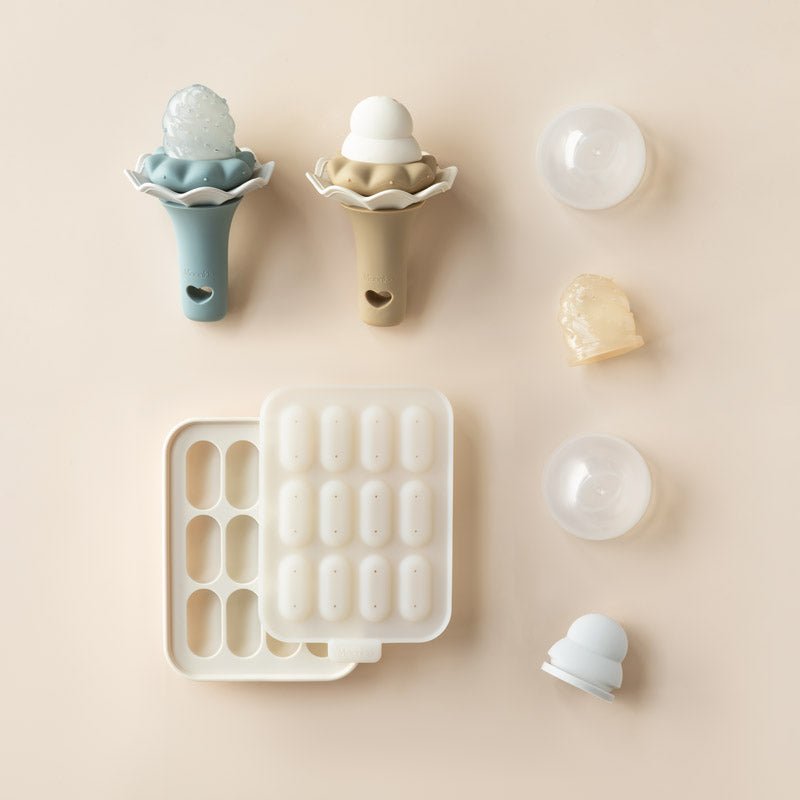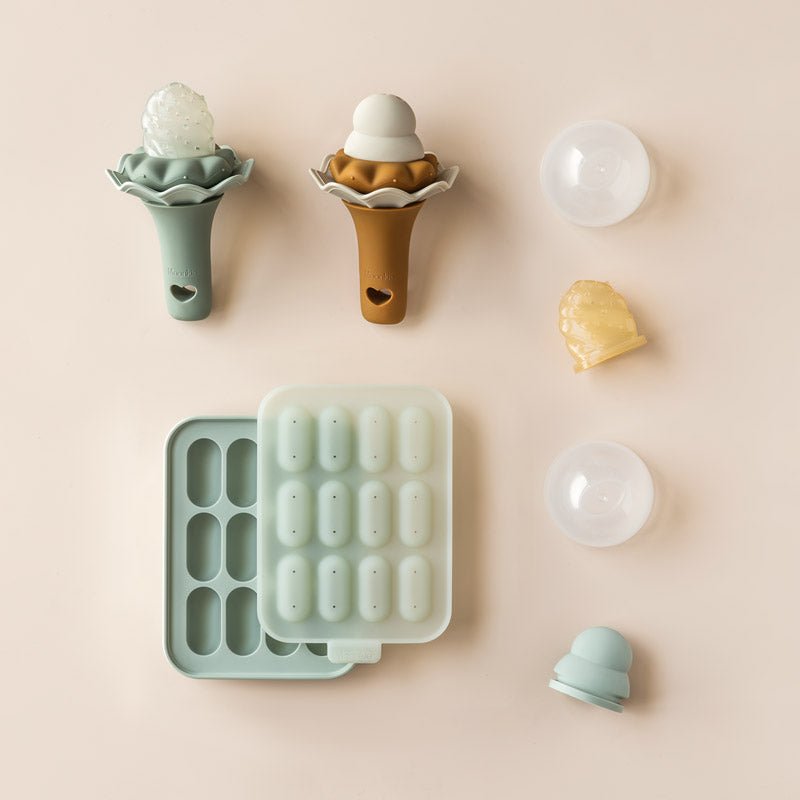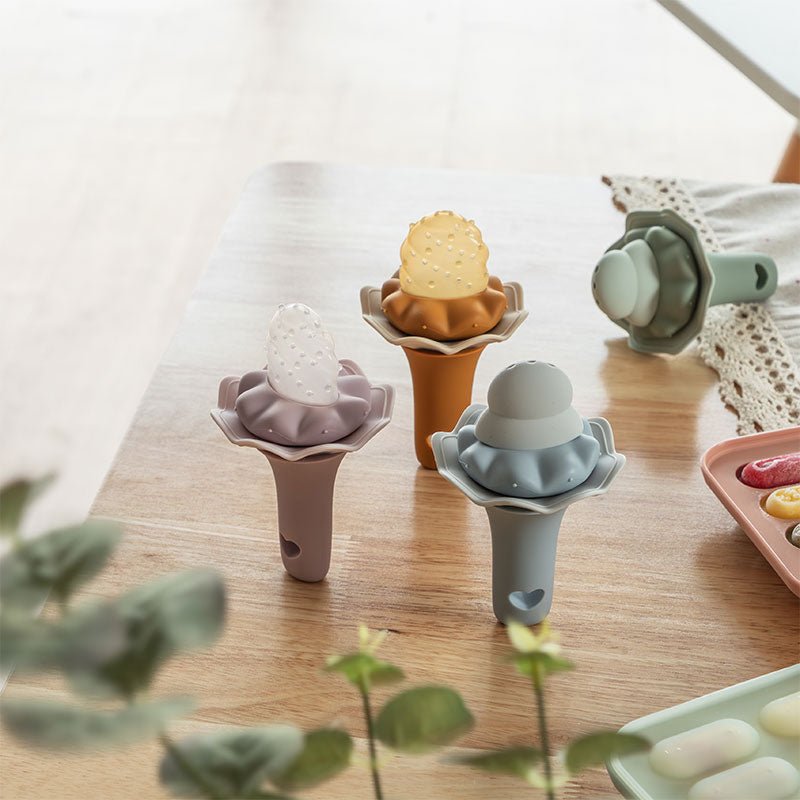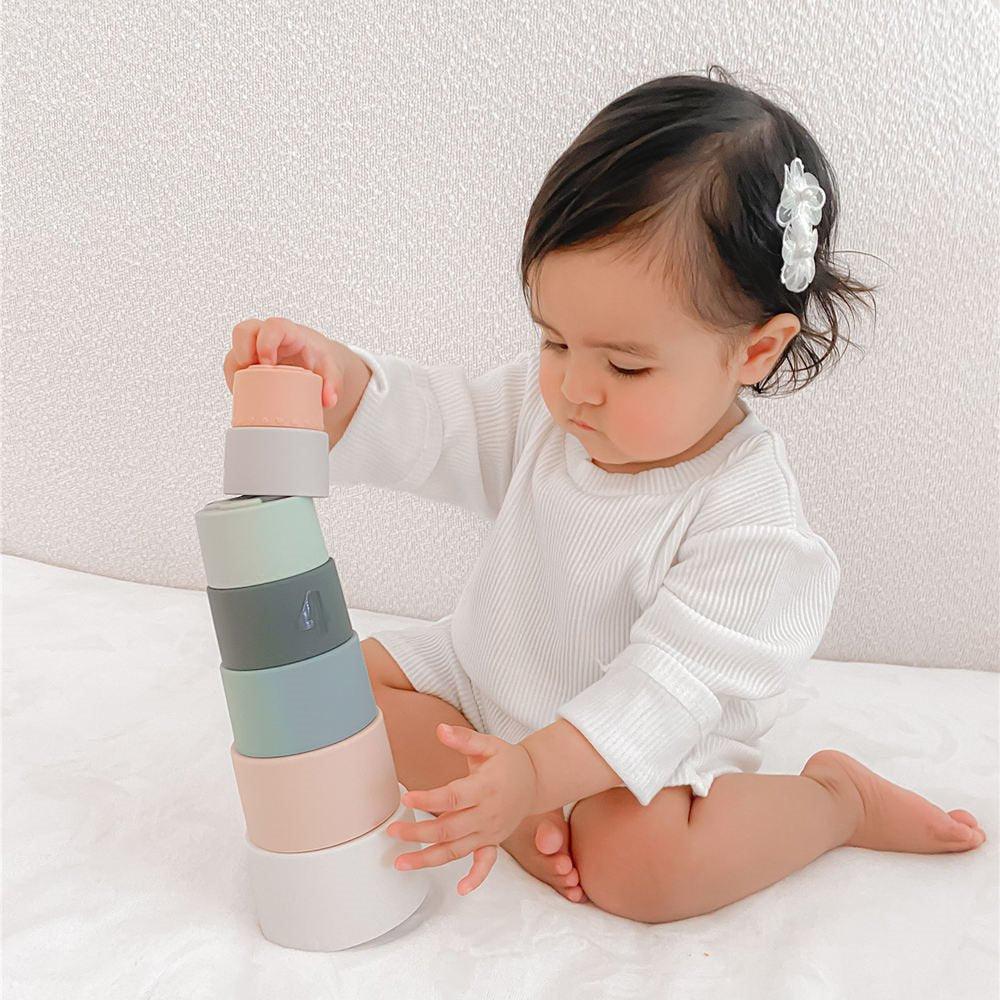We've heard that plastic is bad for you, but it's terribly convenient--and cheap! Is it really that bad? Wouldn't someone have stopped it by now if it was glaringly evident that plastic was bad for our health? Think again.
Plastics make our modern world go around. However, a growing body of studies shows that plastics pose glaring dangers to the health of infants, toddlers, children, teenagers, adults, animals, and the environment. Yet plastics are still the most popular material for toys.
This article will explain the hubbub surrounding plastics, shed light on the biggest chemical culprits harming humans, and briefly discuss what parents need to know about plastics in baby toys and products. Let's dive in!
What's the Big Deal With Plastic Baby Toys and Products?
Plastic baby toys have been a popular choice among parents for decades due to their affordability. However, concerns have been raised about the safety of plastic toys for babies and young children, specifically about the chemicals used in producing them.
Since different types of plastic are in everything from baby bottles to pacifiers to toys to dishes to food packaging, knowing which types to avoid and why is crucial!
What Types of Plastic Should I Avoid in My Baby's Toys and Why?
Though some will say that any and all plastics are harmful and should be avoided totally, studies do not yet support that claim. However, there is substantial evidence against a few types of plastics or the chemicals that make those plastics hold their shape, stand rigid, or flex.
Here are the major plastic players to avoid and explanation of why:
BPA
The most common chemical found in plastic toys is Bisphenol A (BPA), which is used to harden plastic and make it more durable. This is great for creating a lasting product, but it is bad for the environment and humans.
According to a study by the National Institute of Environmental Health Sciences (NIEHS), low doses of BPA can imitate the effects of estrogen in the body and disrupt the endocrine system (source).
In plain English, that means BPA can cause developmental problems in kids and reproductive problems in men and women, as well as increasing the risk of obesity, diabetes, and cancer. Messing with hormones can be disastrous!
But why is BPA still widely used in baby toys, teethers, bottles, and food storage containers? The Food and Drug Administration (FDA) approved BPA in materials contacting food in the early 1960s, but hundreds of studies have challenged this decision since 2008 (source).
Though multiple studies and petitions have been submitted to the FDA over the years asking for BPA to be banned or a label on plastic products containing it, the FDA has refused to be swayed by the evidence and instead relies on its own studies.
In June 2022, the FDA agreed to reconsider BPA with more recent studies, but as of March 2024, it still maintains that low levels of BPA are safe for humans.
On the bright side, the FDA holds to its regulation changes in 2012 and 2013 to forbid BPA in baby bottles, sippy cups, and formula packaging (source). Still, however, no label is required when BPA is in a plastic product.
PVC
Another type of plastic to avoid in plastic baby toys and products is polyvinyl chloride (PVC). PVC is a toxic plastic containing phthalates, chemicals that can interrupt the endocrine system and cause developmental and reproductive problems.

According to a 2010 Center for Health, Environment & Justice report, PVC is often found in soft plastic toys, dolls, and building blocks (source). Unfortunately, PVC is still everywhere, including in water lines, vinyl flooring, teething rings, and shoe soles (source). Even worse, PVC is toxic in creation, existence, recycling, and waste (source).
If PVC is such a toxic plastic, why is it still legal? And why have we surrounded ourselves with it? Well, PVC is cheap, effective, and useful for all kinds of things. Homeowners replacing old lead pipes or renovating their homes may not have the funds for far more expensive steel pipes, copper pipes, or natural flooring and countertops (source).
Besides, if the Environmental Protection Agency (EPA) labeled PVC a hazardous material, every industry, sector, community, and household would be affected drastically (source). But we can help our babies and toddlers by ensuring they don't have PVC toys, teethers, bottles, or sippy cups.
Polycarbonate and Phthalates
Another plastic to avoid is polycarbonate, which is often used to make food containers. Polycarbonate contains BPA, which is the baddie we addressed first. The BPA leaches into food when it comes into contact with hot water (source).
Plastic toys can also contain phthalates, harmful chemicals manufacturers use to soften plastic, make it more flexible, increase durability, and sometimes dissolve other materials (source).
But phthalates are in more than just plastic toys; they are in shampoo, perfume, lotion, makeup, medical tubing, car seats, food packaging, and so much more (source).
According to the EPA, exposure to phthalates can lead to reproductive problems, developmental issues, and asthma (source). They get into our bodies easily and can disrupt fetal development during pregnancy or impair brain development in children.
So, why are phthalates allowed? The Centers for Disease Control and Prevention has long contended that phthalates are only harmful if they exceed a certain level in a person's urine (source).
Though regulations do not permit phthalates to be added directly to food, they are allowed to exist in plastic toys, packaging, and other common materials. The main restriction for phthalates is that they shouldn't exist in baby products in quantities over 0.1% (source).
It's worth noting that not all plastics are harmful. High and low-density polyethylene (HDPE; LDPE) and polypropylene (PP) are all safe plastics commonly used in baby toys. These plastics are free from harmful chemicals and not known to leach into food or drinks.
Are There Any Regulations in Place to Ensure the Safety of Plastic Toys for Children?
Yes, regulations are in place to ensure the safety of plastic toys for children. In the United States, Congress created the Consumer Product Safety Commission (CPSC) in 1972 to regulate the safety of toys and set guidelines for toy manufacturers to follow.

The CPSC has strict requirements for plastic toys, including restrictions on lead, phthalates, and BPA. According to the CPSC, toys manufactured or imported for sale in the U.S. must comply with these guidelines.
Similarly, the European Union has implemented the Toy Safety Directive, which sets strict safety standards for toys sold in the EU and includes restrictions on lead, cadmium, and phthalates.
So why are harmful plastics still in our babies' toys, bottles, plates, clothes, and everything else? Are they slipping by these agencies? A study by the Danish Consumer Council found that bisphenols were present in more than half of the 121 baby and toddler products they tested (source).
Moreover, since humans are so good at making materials that outlast them, plastic toys pose a massive environmental problem. An estimated 80% of discarded toys end up in landfills or oceans, and they won't break down for hundreds of years (sources). What's the point of these regulatory entities if they are still allowing the bad stuff?
Creating these regulatory bodies and establishing regulations on toy design and material safety were critical first steps, but we still have a long way to go. As parents, it's crucial to know that a toy or baby product being on store shelves is not a testament to it being safe for your little one. Inform yourself and make lifestyle choices accordingly.
Are Plastic Toys Today Safer Than When I Was a Kid?
Plastic toys have been around for decades, and as time goes on, more and more studies are coming out with the good, the bad, and the ugly of plastics (with many of the latter). But surely we're moving toward safer toy choices nowadays, right? Well, it's complicated.

On one hand, plastic toys today are subject to more regulations and safety standards than they were in the past, as explained above. If you're curious about how many, dig into this list from The Toy Association.
On the other hand, not all plastic toys are created equal. Some cheaply made toys may not meet safety standards, and some may contain BPA, PVC, or phthalates.
For example, a 2022 report from The Guardian shared that researchers had tested 226 products from five popular dollar store chains in the U.S. and found that 120 contained at least one toxic chemical (source).
As far as the environment goes, "less toxic" plastic is still not biodegradable, and with so many plastic toys ending up in landfills and oceans, our reliance on plastics is doing more harm than good. A study by the Ellen MacArthur Foundation found that by 2050, there could be more plastic waste in the ocean than fish (source)!
So, while plastic toys today may be subject to more safety regulations and made with safer materials, parents should still be cautious when choosing toys for their children.
How Do I Know If a Plastic Toy is Safe for My Child?
The trick is doing your research, of course! However, since manufacturers are not required to report the chemicals in their toys, knowing whether a plastic toy is safe can be a hassle.
Here are some tips to help you out:
Tip |
Explanation |
Look for labels. |
Check the label on the toy to see if it is BPA-free and PVC-free (if the manufacturer reports it). |
Check for recalls. |
Look up the toy brand and model to see if any recalls or safety warnings have been issued for that particular toy. The CPSC displays a list of recalled products on its website, and you can also sign up for email alerts to stay informed. |
Research the brand. |
Research the toy brand to see if it has a good reputation for safety and quality. The CPSC recommends purchasing toys from reputable manufacturers who follow strict safety guidelines. |
Examine the toy. |
Look for sharp edges, small parts, or other potential hazards that could harm your child. |
Follow age recommendations. |
Ensure that the toy is age-appropriate for your child. Some toys may have loose parts that could be a choking hazard for younger children. |
How to Get Rid of Plastic Toys in a More Eco-Friendly Way
Plastic toys have become such a huge facet of our daily lives, and it can be challenging to get rid of them in an eco-friendly way. Since plastic is not biodegradable and takes hundreds of years to decompose, it is crucial to find alternative ways to dispose of it.

If the plastic toys are in good shape and lack harmful chemicals, donate them to a charity. Organizations like Goodwill, The Salvation Army, and Toys for Tots will accept gently used toys and give them to families in need.
Broken or unwanted plastic toys can be recycled. But pay attention to the recycling symbol on each toy and sort them accordingly. For instance, you can recycle toys made from PET (polyethylene terephthalate) along with other plastic products in curbside recycling programs.
Unfortunately, less than 10% of plastic waste is recycled each year (source). It's a cost worth considering before buying a plastic toy!
Is Silicone a Better Alternative Material for Baby Toys and Products than Plastics?
YES! Silicone is a synthetic material made from one of Earth's most abundant resources: sand (silica). Though the process of creating silicone takes a lot of resources and is not biodegradable, high-quality food-grade silicone will last for years in excellent condition if not abused.
High-quality food-grade silicone is an ingenious choice for making baby toys and products because it is:
hypoallergenic
easy to clean
resistant to heat and cold (boiling water or freezer)
durable to drops, bangs, and teething toddlers
easy to mold in a variety of shapes
long-lasting
Silicone baby toys and products can last through multiple kids so long as nothing drastic happens to them (knives, bitey cat, mowers). If a silicone toy ever becomes damaged, you can recycle it at a special silicone recycling facility or send it to ECO USA.
Read more about how silicone is made and how it compares to other common baby toy materials in Pros and Cons of Silicone Baby Toys: A Comprehensive Guide for Parents.
In a Nutshell
Though plastics have revolutionized modern living, they have also brought humans closer to harmful chemicals and littered our planet with material that will not break down for hundreds of years.
We have knowledge, regulations, and recycling programs, but we also have choices to make for our families and our planet; choices that may have short-term consequences for our health but certainly long-term consequences for future generations.

